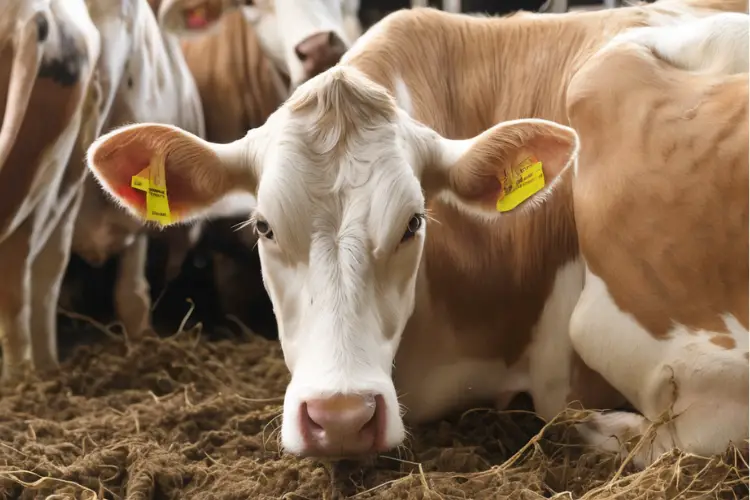Displaced abomasums in cattle, particularly dairy cows, pose significant health risks and can lead to decreased milk production and economic losses.
In this blog post guide, we will share effective strategies for managing this condition, exploring both surgical and non-surgical approaches, pain management, welfare considerations, and the economic implications for herd health.
Drawing on recent research and advancements in veterinary medicine, the article aims to provide a comprehensive guide for veterinarians and dairy farmers to tackle the issue of abomasal displacement effectively.
Key Takeaways
- Recent studies highlight the effectiveness of one-step laparoscopy-guided abomasopexy over traditional omentopexy, showing a quicker return to optimal milk yield.
- Minimally invasive field abomasopexy techniques are gaining popularity due to their reduced recovery times and lower risk of complications post-surgery.
- Nutritional adjustments, including the use of rumen-protected formulations, can significantly reduce the incidence of displaced abomasums during the transition period.
- Pain management protocols, such as the use of analgesics, are essential for improving cattle welfare and recovery outcomes after surgical interventions.
- Economic analyses suggest that investing in preventative measures and advanced surgical techniques can lead to better herd productivity and long-term financial benefits.
Understanding Displaced Abomasums in Dairy Cattle

Pathophysiology of Left Displaced Abomasum (LDA)
The left displaced abomasum (LDA) is a condition where the abomasum, the cow’s fourth stomach, moves from its normal position to the left side of the abdomen.
This displacement can lead to abomasal impaction, a primary disorder often resulting from abomasal hypomotility or dietary impaction due to ingestion of poorly digestible material. The impaction can cause significant discomfort and may result in condition or production loss.
Risk factors for LDA include dietary changes, high grain diets, and periods of stress such as calving or transportation. The pathophysiology involves a complex interplay of factors that disrupt the normal motility and gas production in the abomasum, leading to its displacement. Early diagnosis and intervention are crucial to prevent further complications and ensure the welfare of the animal.
Management of LDA typically involves correction of the displacement, which can be achieved through various surgical or non-surgical methods. The choice of treatment should be based on the individual cow’s condition, the severity of the displacement, and the resources available on the farm.
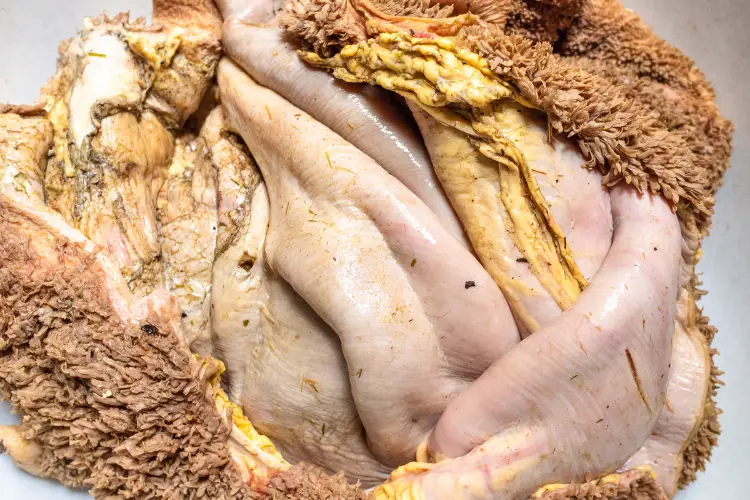
Risk Factors and Impact on Milk Production
The health and productivity of dairy cattle are closely linked, with certain conditions posing significant risks to both. Displaced abomasums, a condition prevalent in dairy herds, particularly affects Holstein-Friesian cattle and can lead to a marked reduction in milk yield. This condition not only impacts the immediate output but also has long-term implications for the cow’s overall health and productivity.
Key risk factors for displaced abomasums include hypomagnesemia, which often goes undetected due to its subtle symptoms like decreased milk yield or food intake. The incidence of this condition is relatively low, estimated to be less than 1% in most herds, but can be higher under specific conditions such as those found in New Zealand or when lactating cows are kept on grass.
The economic implications of displaced abomasums are significant, as they can lead to reduced growth rates, increased culling, and mortality. The following table summarizes the cost considerations associated with this condition:
| Factor | Impact |
|---|---|
| Reduced milk yield | Direct loss in dairy production |
| Reduced growth rates | Affects future productivity potential |
| Mortality and culling | Additional costs and herd management challenges |
Effective management strategies are essential to mitigate these risks and safeguard the milk production capabilities of the herd.
Diagnostic Techniques for Abomasal Displacement
The diagnosis of displaced abomasums in dairy cattle is critical for timely and effective management. Ultrasonography has become a cornerstone in the diagnostic process, allowing for non-invasive visualization of the abomasum’s position. This technique is highly sensitive and specific, making it a preferred choice among veterinarians.
Another advanced diagnostic method is endoscopy. With the aid of small incisions, vets are able to visualize the displaced abomasum and correct this condition endoscopically. This minimally invasive approach is gaining popularity due to its reduced recovery time and lower risk of complications.
Diagnostic accuracy is paramount, as the subsequent treatment, whether surgical or non-surgical, depends on the precise identification of the condition. The following table summarizes the key diagnostic techniques and their attributes:
| Technique | Invasiveness | Sensitivity | Specificity | Recovery Impact |
|---|---|---|---|---|
| Ultrasonography | Non-invasive | High | High | Minimal |
| Endoscopy | Minimally | Moderate | High | Reduced |
Early detection and accurate diagnosis are essential for managing displaced abomasums effectively, ensuring the health and productivity of the dairy herd.
Surgical Interventions for Displaced Abomasums
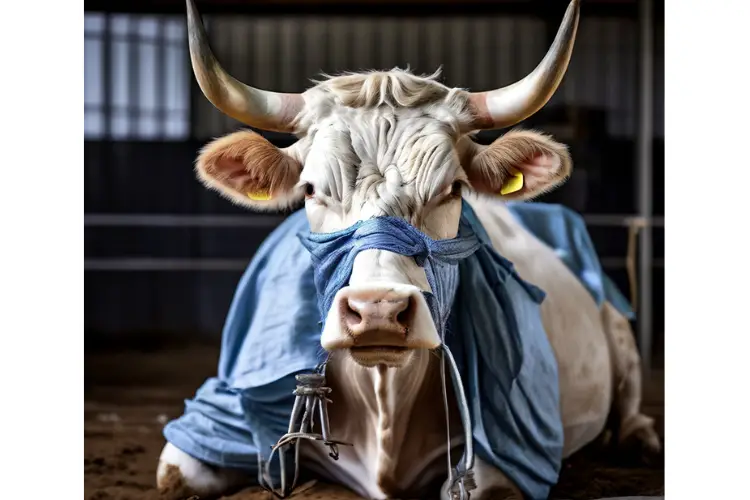
Comparing One-Step Laparoscopy-Guided Abomasopexy and Omentopexy
The evolution of surgical techniques for treating left displaced abomasum (LDA) in dairy cattle has led to the development of one-step laparoscopy-guided abomasopexy. This method is often compared to the traditional omentopexy performed via right flank laparotomy. One-step laparoscopy-guided abomasopexy offers a minimally invasive alternative, potentially reducing recovery time and improving return to milk yield.
When evaluating the two procedures, several factors must be considered, including surgical time, complication rates, and the impact on milk production post-surgery. A study by A.M. Giesteira et al. highlighted the significance of these factors in relation to the return of milk yield. The table below summarizes key comparative aspects:
| Procedure | Surgical Time | Complication Rate | Return to Milk Yield |
|---|---|---|---|
| Laparoscopy-Guided Abomasopexy | Shorter | Lower | Faster |
| Omentopexy via Laparotomy | Longer | Higher | Slower |
It is essential to weigh the benefits of a quicker recovery and reduced stress on the animal against the cost and availability of the necessary endoscopic equipment. Ultimately, the choice of procedure should align with the best interests of both the animal’s welfare and the dairy operation’s efficiency.
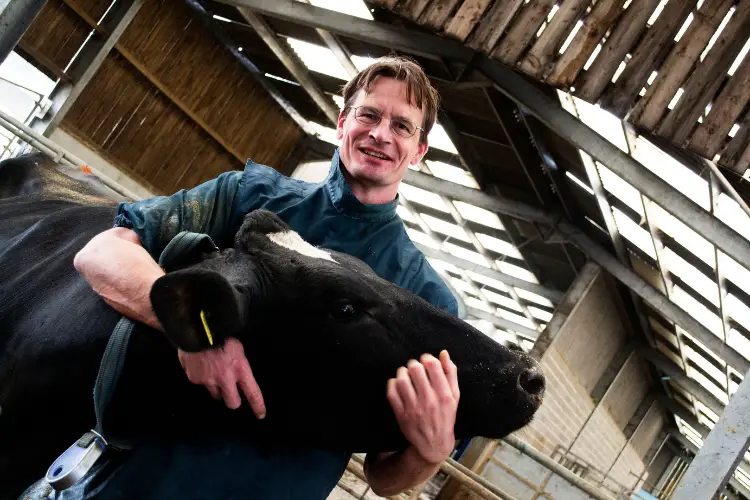
Advancements in Minimally Invasive Field Abomasopexy
The field of veterinary medicine has seen significant advancements in the treatment of left displaced abomasum (LDA) through minimally invasive techniques.
Minimally invasive field abomasopexy has become a preferred method due to its reduced recovery times and lower risk of infection. This approach aligns with the growing trend of minimally invasive surgery (MIS) in veterinary practice, which has been documented to offer numerous benefits over traditional methods.
One of the key advantages of these techniques is the ability to perform surgeries with minimal disruption to the animal’s daily routine. For instance, the use of isobaric (gasless) laparoscopy allows for procedures to be carried out on standing animals, significantly reducing stress and improving postoperative outcomes. However, despite the growth in MIS, the availability of specialized training and equipment can be a limiting factor for widespread adoption.
The following table summarizes the benefits of minimally invasive field abomasopexy compared to traditional surgical methods:
| Benefit | Minimally Invasive | Traditional Surgery |
|---|---|---|
| Recovery Time | Shorter | Longer |
| Risk of Infection | Lower | Higher |
| Animal Stress | Reduced | Increased |
| Postoperative Pain | Less | More |
As the industry continues to evolve, it is essential for veterinary professionals to stay informed about the latest techniques and to seek out specialized training in MIS to ensure the best possible care for dairy cattle.
Postoperative Care and Monitoring for Optimal Recovery
After surgical intervention for a displaced abomasum, postoperative care is crucial for the cow’s recovery and return to productivity. Monitoring should include regular assessment of vital signs, appetite, and milk production. Any signs of discomfort or complications should be promptly addressed.
Effective postoperative monitoring can be structured into a simple checklist to ensure all aspects of the cow’s health are observed:
- Observation of incision site for signs of infection or dehiscence
- Evaluation of rumen motility and function
- Monitoring for signs of systemic infection or metabolic disturbances
- Ensuring adequate hydration and return to normal feeding behavior
Timely intervention based on these observations can significantly improve the prognosis. It is also important to maintain clear communication with the veterinary team for any necessary adjustments in pain management or treatment protocols.
Non-Surgical Management and Preventative Strategies
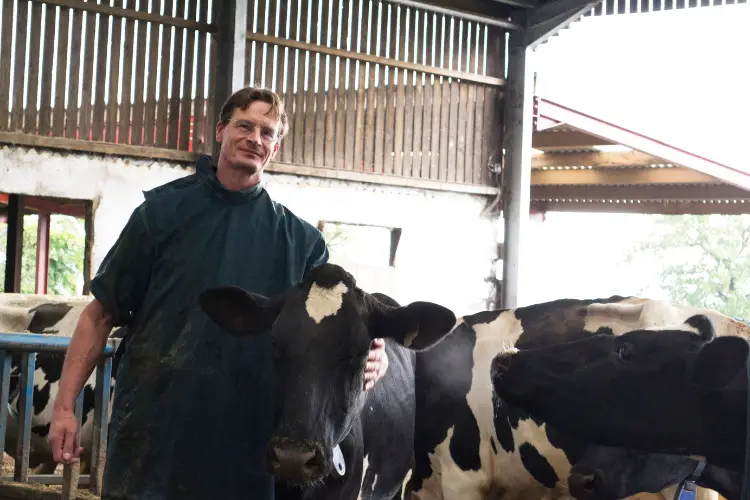
Nutritional Adjustments to Prevent Abomasal Displacement
Nutritional management plays a pivotal role in preventing the occurrence of displaced abomasums in dairy cattle. Proper dietary formulation can significantly reduce the risk of this condition. It is essential to balance the ration to meet the energy demands of high-producing cows while avoiding excessive fermentable carbohydrates that can lead to ruminal acidosis and subsequent abomasal displacement.
A study highlighted the potential benefits of phosphorous and potassium supplementation in the form of a dipotassium phosphate bolus. The hypothesis suggested that this supplementation could stimulate appetite and improve recovery, which may indirectly prevent abomasal displacement by maintaining a healthy digestive function.
To implement effective nutritional adjustments, consider the following points:
- Ensure a balanced energy to fiber ratio in the diet.
- Monitor body condition score to avoid overconditioning.
- Provide consistent access to clean water to support hydration and rumen function.
- Incorporate adequate levels of trace minerals and vitamins to support overall health.
The Role of Trace Minerals and Vaccination in Disease Prevention
The prevention of displaced abomasums in cattle can be significantly enhanced through the strategic use of trace minerals and vaccination protocols.
Selenium plays a crucial role in this regard, particularly in regions prone to deficiencies. Administering selenium one month prior to calving, and to calves in the early weeks of life, can mitigate risks associated with white muscle disease, which is linked to abomasal displacement.
Vitamin E supplementation, often in conjunction with selenium, is also vital for preventing oxidative stress that can compromise cardiac and muscle function. This is especially important in cases where altered cardiac function could be mistaken for other electrolyte abnormalities such as milk fever or grass staggers. The table below summarizes the recommended supplementation schedule:
| Animal | Selenium Supplementation | Additional Notes |
|---|---|---|
| Cows | 1 month prior to calving | May require Vitamin E as well |
| Calves | Early weeks of life; repeat at 4 and 8 weeks | Administered via injection, feed, etc. |
Vaccination strategies should be tailored to the specific needs of the herd, taking into account regional disease prevalence and the potential for immunological challenges that could predispose cattle to abomasal displacement. By integrating these preventative measures, farmers can enhance the overall health and resilience of their dairy herds.
Implementing On-Farm Protocols to Reduce Incidence Rates
To effectively reduce the incidence rates of displaced abomasums, it is crucial to implement comprehensive on-farm protocols. These protocols should encompass various aspects of cattle management, ranging from nutrition to monitoring practices. Producers using the Techmix’s Prep 305 Protocol have seen a reduced number of sick cows, which is a testament to the effectiveness of structured protocols.
One of the key components of such protocols is the transition period, where special attention is given to the cows’ dietary needs. This period is critical for preventing metabolic diseases that can predispose cattle to abomasal displacement. Additionally, ensuring efficient energy utilization from both body fat and feed is essential for maintaining overall cow health.
The following list outlines some core elements that should be included in on-farm protocols to minimize the risk of displaced abomasums:
- Regular veterinary check-ups and endoscopic procedures for early diagnosis
- Nutritional adjustments, particularly during the transition period
- Implementation of trace mineral supplementation and vaccination programs
- Adoption of management practices that reduce stress and enhance cow comfort
By adhering to these guidelines, dairy farms can not only improve animal welfare but also optimize milk production and quality.
Pain Management and Welfare Considerations
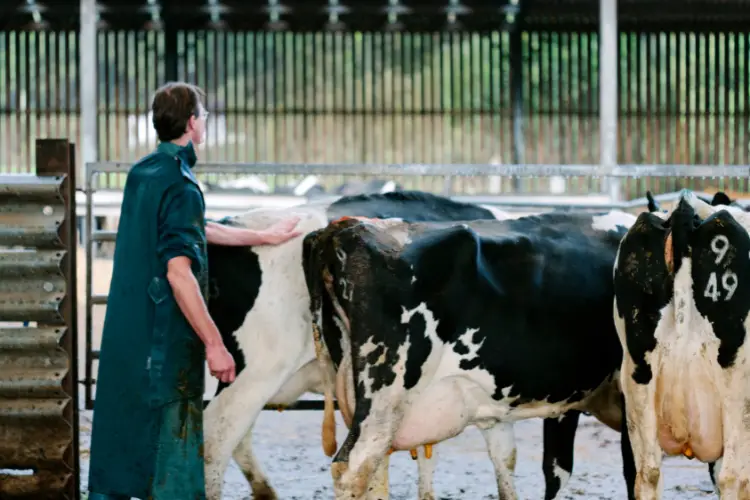
Analgesic Protocols for Displaced Abomasum Procedures
Effective pain management is crucial for the welfare of cattle undergoing surgical correction of a displaced abomasum. Analgesic protocols should be tailored to the individual animal, considering factors such as the severity of the condition and the specific surgical technique employed. For instance, the use of lidocaine as an analgesic has been studied for its pharmacokinetics and clinical efficacy in cattle, showing promise for intranasal administration during certain procedures.
A multimodal approach to analgesia, combining systemic analgesics with local anesthetics, can enhance pain relief and facilitate a smoother recovery. Below is a list of commonly used analgesics in cattle:
- Non-steroidal anti-inflammatory drugs (NSAIDs) for inflammation and pain
- Opioids for severe pain management
- Local anesthetics for site-specific pain relief
- Alpha-2 agonists for their sedative and analgesic properties
Pain assessment in cattle can be challenging, but it is essential for optimizing treatment. Tools such as numerical rating and visual analog scales help veterinarians and producers to evaluate pain levels and adjust analgesic protocols accordingly. This systematic approach ensures that cattle receive the necessary care to minimize discomfort and promote healing.
Assessing and Enhancing Cow Comfort Post-Surgery
Ensuring cow comfort after surgical procedures for displaced abomasums is crucial for both animal welfare and recovery outcomes. Postoperative pain management is a key component, as it directly influences the cow’s well-being and its return to normal behaviors. Effective analgesic protocols, as highlighted in the work of D.E. Anderson et al., are essential to mitigate discomfort and promote healing.
Monitoring and adjusting the cow’s environment can significantly enhance recovery. Providing a clean, dry, and well-bedded area allows for adequate rest and reduces stress. Additionally, minimizing noise and handling by farm personnel can help maintain a calm atmosphere conducive to recovery. It is also important to ensure easy access to water and feed, which supports overall health and a return to optimal milk production.
To systematically evaluate cow comfort and recovery progress, consider the following checklist:
- Regular assessment of pain levels and mobility
- Observation of eating and rumination patterns
- Inspection of surgical sites for signs of infection or complications
- Adjustment of housing to improve comfort and reduce injury risk
By prioritizing cow comfort and closely monitoring post-surgical recovery, dairy farmers can not only enhance animal welfare but also ensure a quicker return to peak productivity.
Ethical Implications of Abomasal Displacement Management
The management of displaced abomasums in dairy cattle raises important ethical considerations. Veterinarians and farmers must balance animal welfare with economic and production demands. The use of simulator-assisted training for abomasal surgery is a step towards ethical practice, as it reduces the risk of complications during actual surgical procedures. This approach is tested for its suitability for learning a bovine surgical technique, which can lead to better outcomes for the animals involved.
When considering the ethical implications, it is crucial to evaluate the pain management protocols in place. Effective analgesia not only ensures compliance with animal welfare standards but also supports the cow’s recovery and return to productivity. The following points highlight key aspects of ethical management:
- The necessity of providing adequate pain relief during and after surgical interventions.
- Ensuring that all procedures are justified and have a clear benefit to the animal’s health and well-being.
- Continuous training and education of staff to perform surgeries with the highest level of competence.
Ultimately, the goal is to implement strategies that prioritize the cow’s comfort and health, which in turn can positively affect milk production and farm profitability. Ethical management practices are not only a moral obligation but also contribute to the sustainability of the dairy industry.
Economic Implications and Herd Health Outcomes
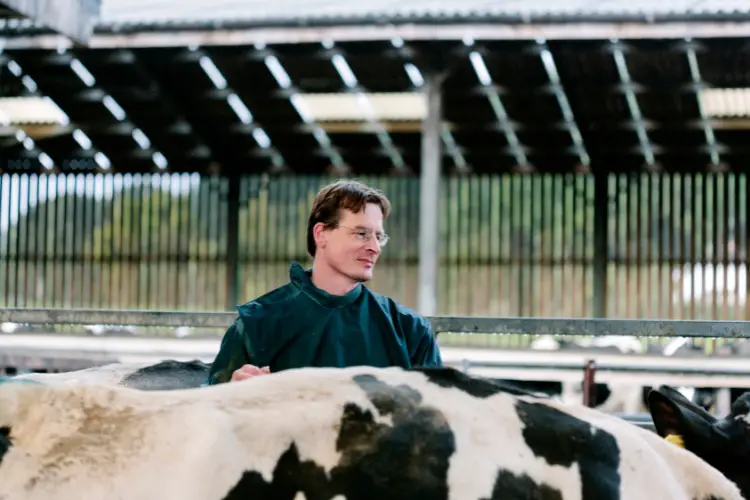
Cost-Benefit Analysis of Treatment Options
When considering the management of displaced abomasums in cattle, the cost-effectiveness of treatment options is a critical factor. Standard treatments are often cost-prohibitive, with culling being the most feasible option for many farms. However, in cases involving valuable animals or mild conditions, treatment may be attempted, taking into account current drug licensing and withdrawal advice.
The introduction of endoscopic procedures has shifted the economic landscape, offering more rapid and accurate diagnosis and prognosis.
These minimally invasive techniques result in shorter recovery times, less tissue injury, and a reduced risk of post-treatment infections. Consequently, there is a decrease in the need for antibiotic medication, which is economically beneficial and important for animal welfare.
| Treatment Method | Economic Benefit | Animal Welfare Impact |
|---|---|---|
| Standard Treatment | Cost-prohibitive | High culling rate |
| Endoscopic Procedures | Cost-effective | Improved recovery |
Repeated inoculation with rumen fluid has been shown to accelerate recovery. A primary study indicated that dairy cows receiving 10 L of rumen fluid post-surgery could increase dry matter intake (DMI) and milk yield, enhancing both the animal’s health and the farm’s productivity.
Influence of Abomasal Displacement on Herd Productivity
The occurrence of displaced abomasums in dairy cattle can have a significant impact on herd productivity. Milk yield is often reduced as affected cows experience metabolic stress and decreased feed intake. This condition not only affects the individual animal but can also lead to a decrease in overall herd milk production.
Effective management of displaced abomasums is crucial for maintaining the health and productivity of the herd. Studies have shown that interventions, such as the one-step laparoscopy-guided abomasopexy, can result in a quicker return of milk yield compared to traditional methods. The following table illustrates the potential impact on milk production:
| Treatment Method | Average Days to Return to Peak Milk Yield |
|---|---|
| Traditional Surgery | 30-45 days |
| Laparoscopy-Guided Abomasopexy | 20-30 days |
In addition to direct effects on milk production, displaced abomasums can increase the risk of other health issues, such as ketosis, which further compromise productivity. Addressing these challenges through preventative measures and timely interventions is essential for sustaining a profitable dairy operation.
Case Studies: Long-Term Effects of Abomasum Management on Dairy Farms
Long-term management of displaced abomasums in dairy cattle has shown varying outcomes across different farms and management practices. Case studies have highlighted the importance of early detection and intervention to ensure minimal impact on milk production and overall herd health. For instance, a study by F. Fiore et al. (2018) demonstrated an association between timely 2-step laparoscopic abomasopexy and sustained milk yield in a commercial dairy farm in Italy.
Economic analysis of these interventions is crucial, as the cost of surgical procedures must be weighed against the potential loss in milk production and the risk of uterine disease and other health complications. The following table summarizes key findings from selected studies:
| Study | Year | Outcome | Milk Production Change |
|---|---|---|---|
| A.M. Giesteira et al. | 2023 | Return to normal yield | Positive |
| S. Franz et al. | 2018 | Sustained yield post-surgery | Neutral |
| K.D. Newman et al. | 2022 | Improved herd health | Positive |
These studies suggest that with proper management, the long-term effects on dairy farms can be mitigated, leading to a healthier herd and more stable milk production. However, the incidence of complications such as hypomagnesemia, although low, remains a concern and requires ongoing monitoring and management.
Conclusion
In conclusion, managing displaced abomasums in cattle is a multifaceted challenge that requires a combination of timely diagnosis, appropriate surgical intervention, and effective post-operative care.
The recent advancements in endoscopic procedures have provided veterinarians with minimally invasive options such as laparoscopy-guided abomasopexy, which have been shown to result in quicker recovery times and reduced pain for the animals. Moreover, the integration of nutritional management strategies, such as the use of rumen-protected formulations, can play a significant role in reducing the incidence of displaced abomasums by improving overall herd health during the transition period.
It is imperative for veterinary practitioners to stay abreast of the latest research and techniques to ensure the best possible outcomes for both the cattle and the dairy industry. The studies and findings discussed in this article underscore the importance of a comprehensive approach that combines surgical excellence with proactive health management to mitigate the impact of this condition.
FAQs:
What is a displaced abomasum in cattle?
A displaced abomasum is a condition in cattle where the abomasum, the fourth compartment of the cow’s stomach, becomes filled with gas and moves out of its normal position. It commonly occurs on the left side (LDA), but can also happen on the right side (RDA).
How is a displaced abomasum diagnosed in dairy cows?
Diagnosis can be made through clinical signs, physical examination, and diagnostic techniques such as ultrasonography, which is a non-invasive method that allows for visualization of the abomasum’s position and contents.
What are the surgical options for treating a displaced abomasum?
Surgical interventions include laparoscopy-guided abomasopexy and omentopexy. These procedures involve repositioning the abomasum and attaching it to the abdominal wall or omentum to prevent recurrence.
What non-surgical management strategies can prevent abomasal displacement?
Preventative strategies include nutritional adjustments, such as providing a balanced diet to manage the transition period, and using rumen-protected supplements to reduce the risk of metabolic diseases that can lead to abomasal displacement.
How does pain management improve welfare in cattle with displaced abomasum?
Effective pain management protocols, including the use of analgesics like lidocaine during surgical procedures, improve cow comfort, reduce stress, and can lead to faster recovery and better overall welfare.
What are the economic implications of managing displaced abomasums in dairy herds?
The economic impact includes the cost of treatment, potential loss in milk production, and effects on herd productivity. Effective management and prevention can improve long-term herd health outcomes and profitability.

